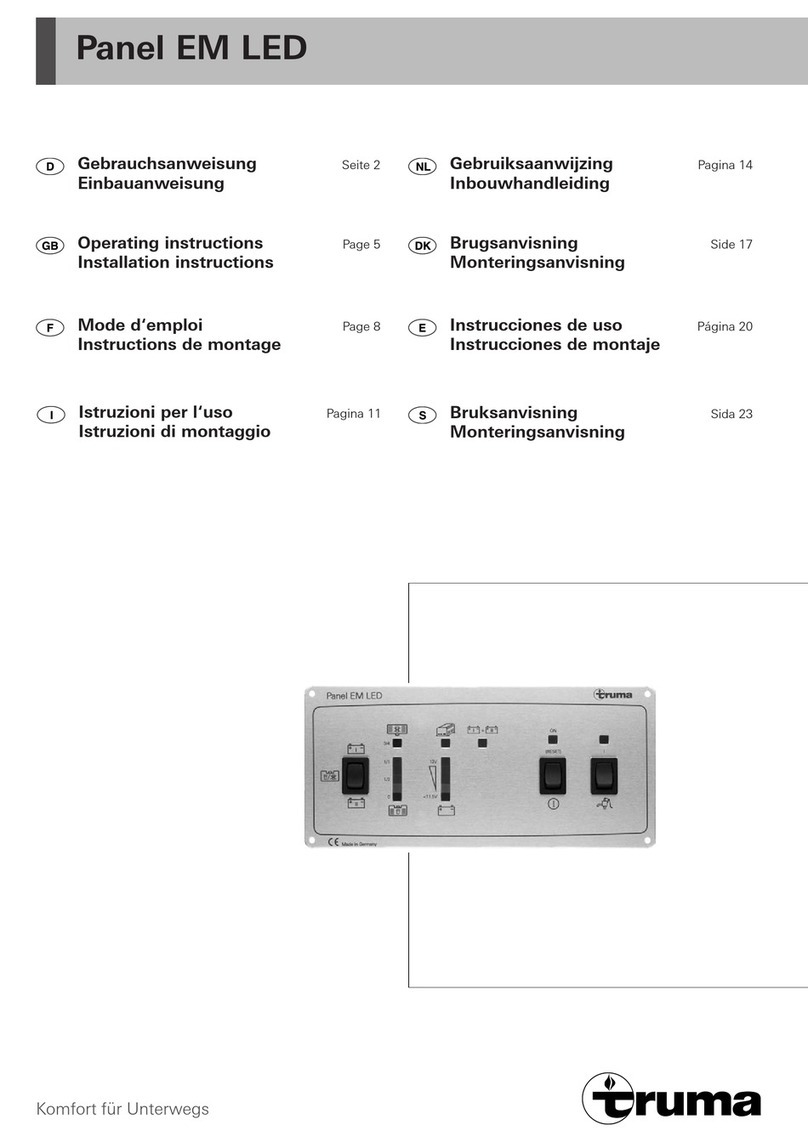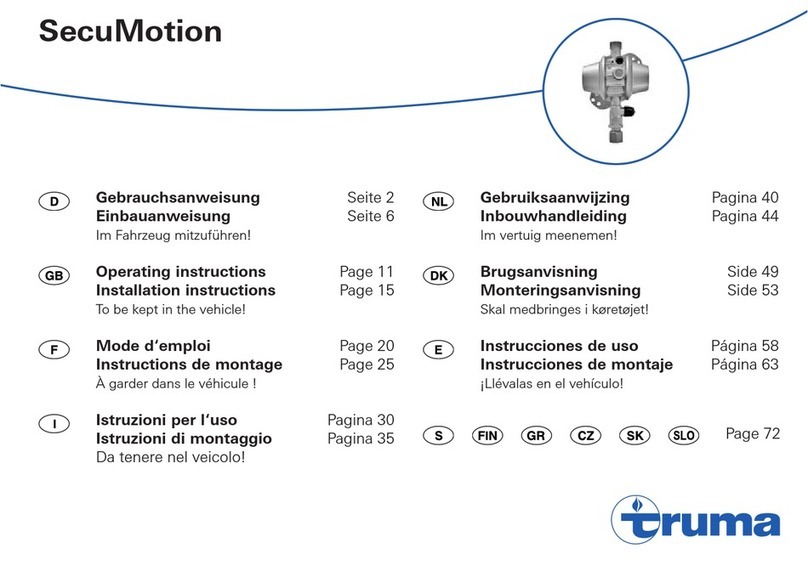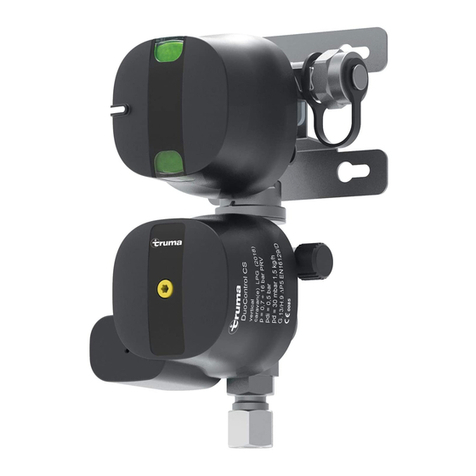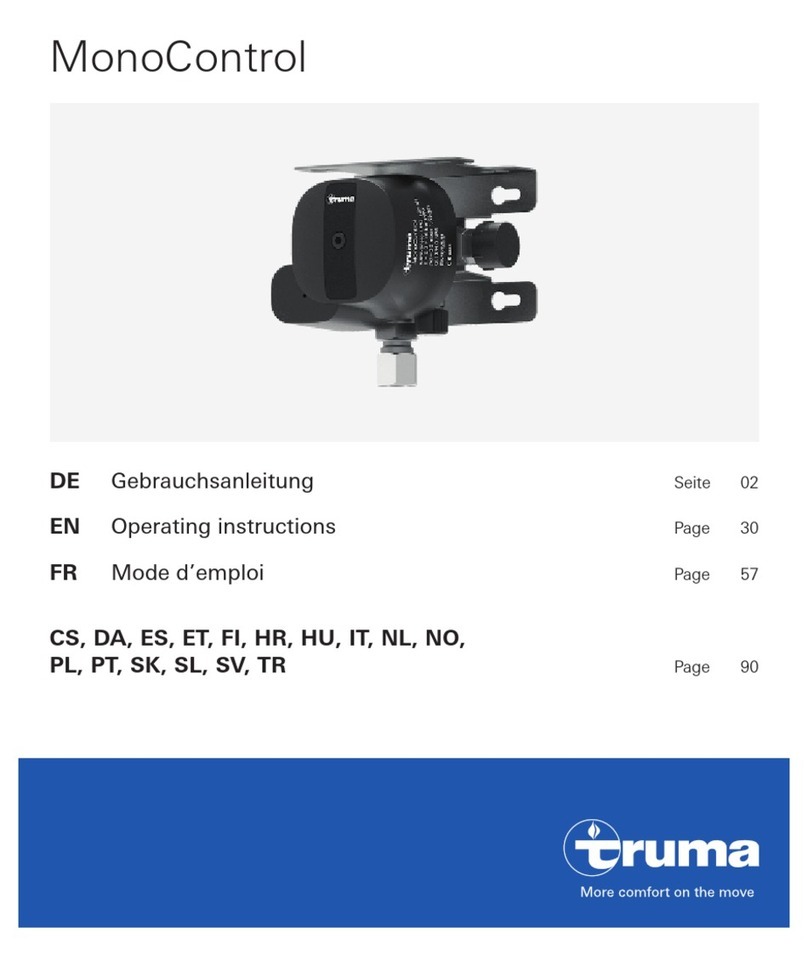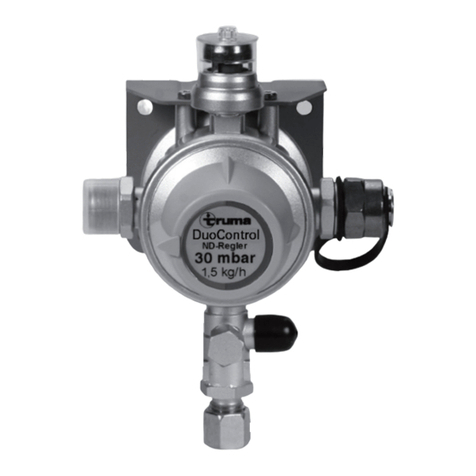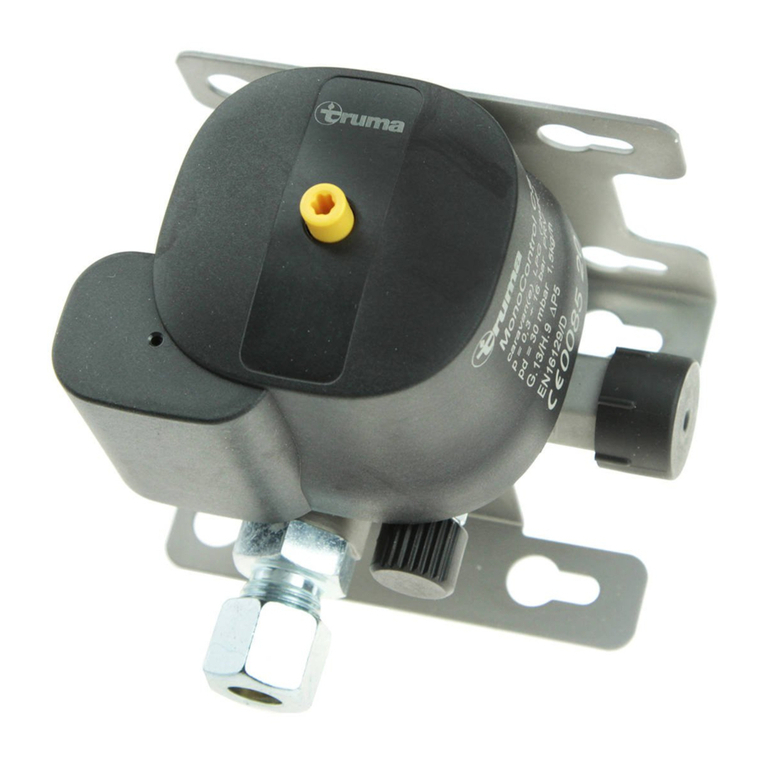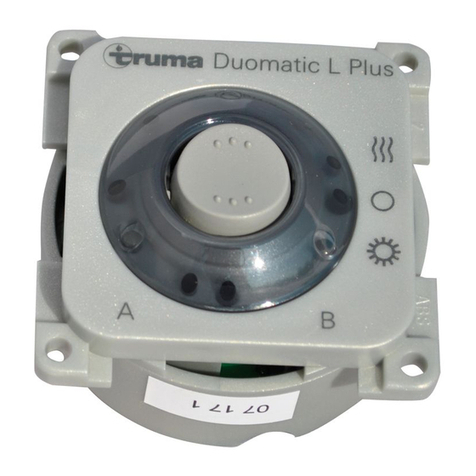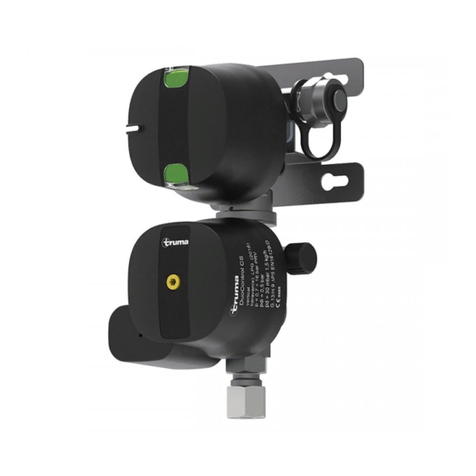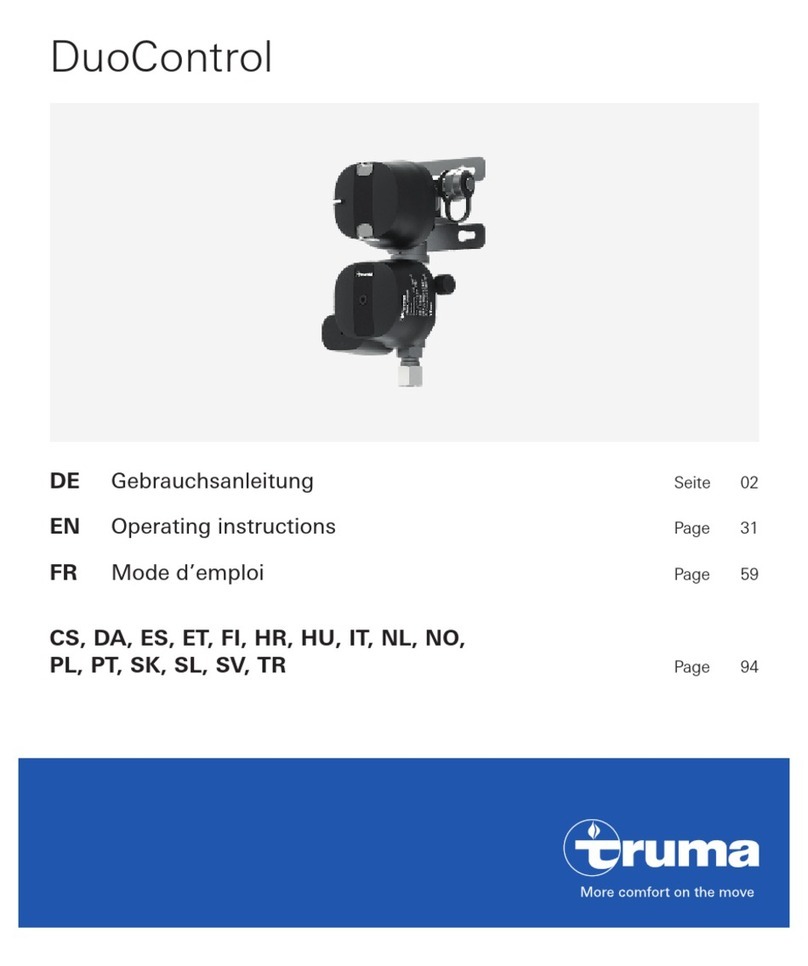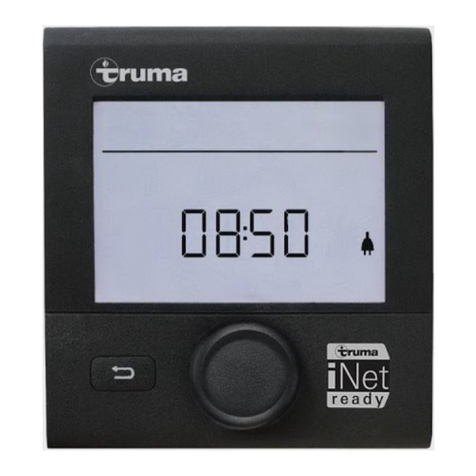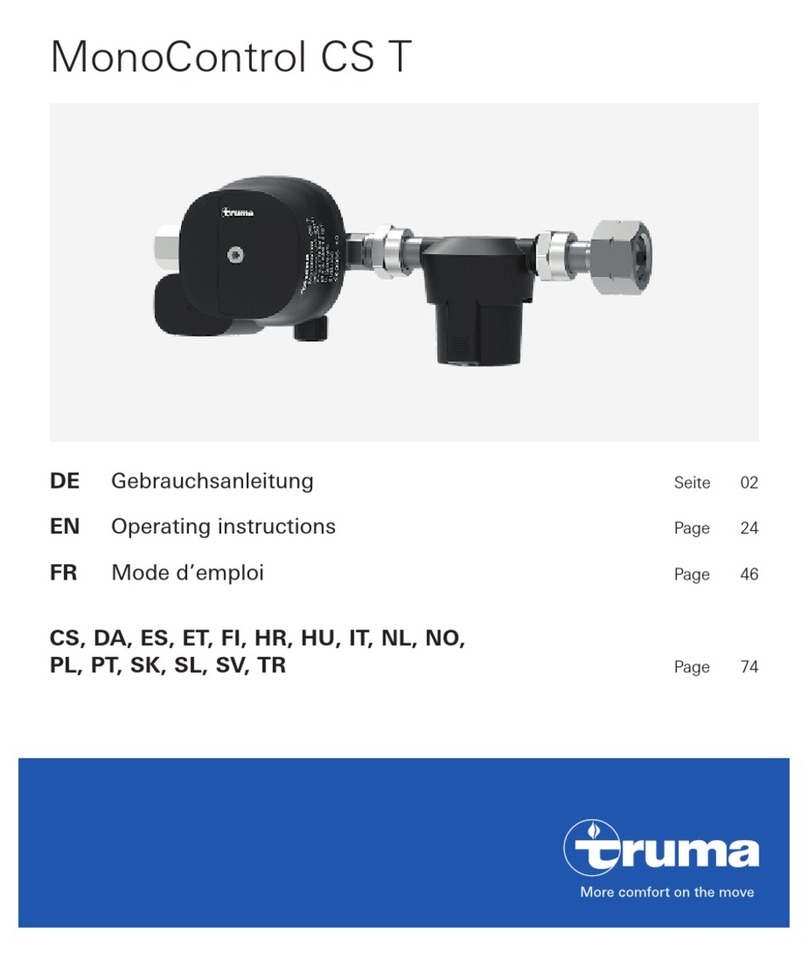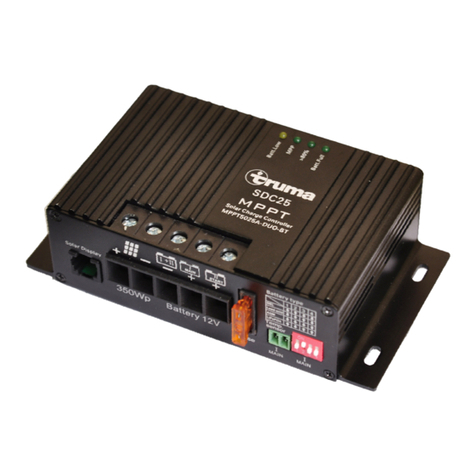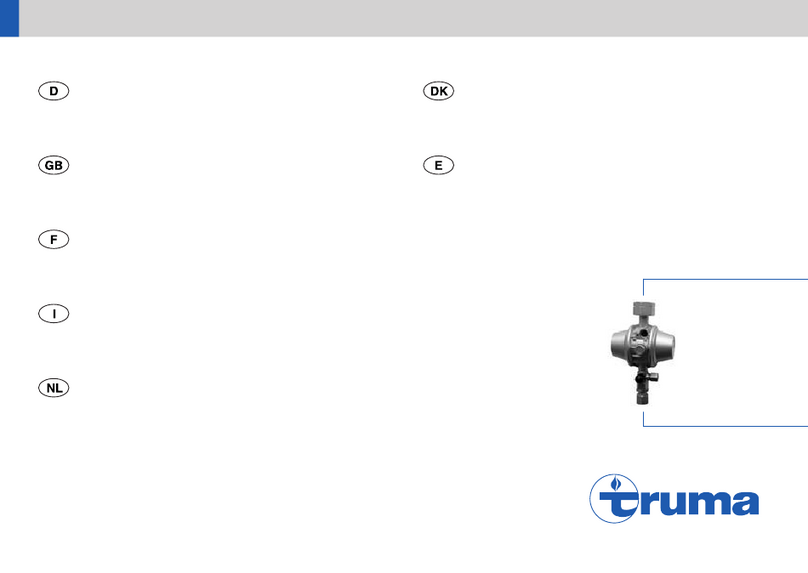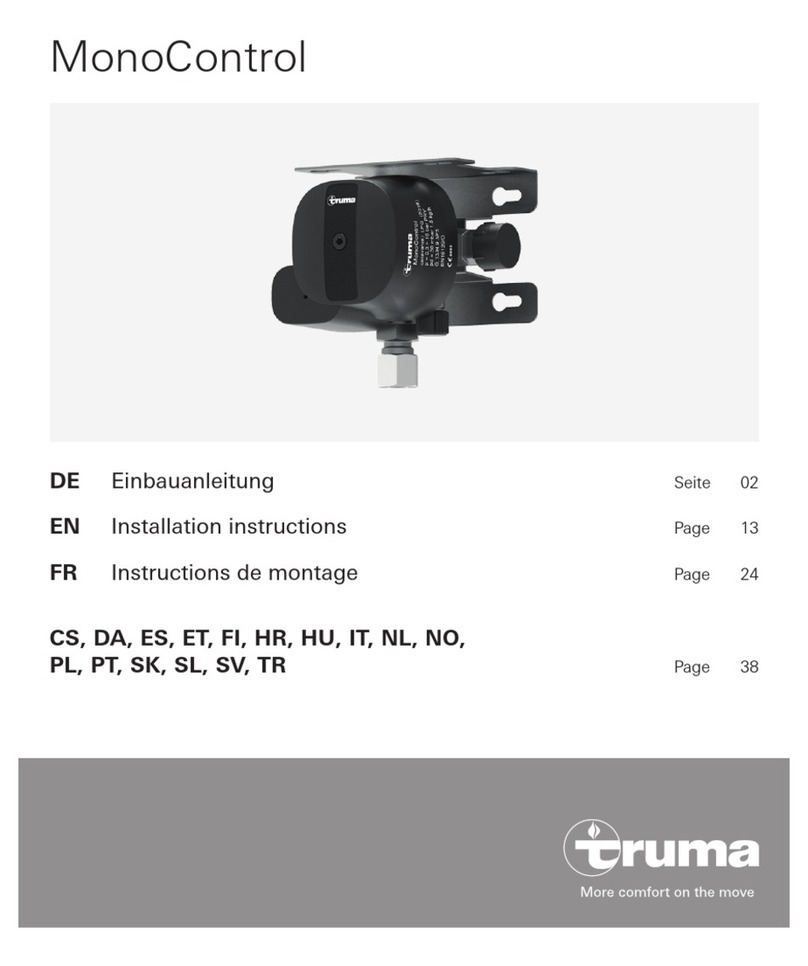
5EN
– A gas filter must be installed upstream of the gas pressure regula-
tor inlet to provide reliable protection against dirt / oiling. A set of
operating and installation instructions is supplied with the gas filter.
– A high-pressure hose with hose rupture protection (HRP) is manda-
tory for connecting the gas cylinder to the gas pressure regulator or
gas filter. For this, Truma provides the necessary high-pressure hos-
es with the most commonly-used connection variants for European
gas cylinders (see www.truma.com).
– In normal conditions of use, in order to ensure correct operation of
the installation it is recommended that this device is changed with-
in 10 years of the date of manufacture. National regulations must
be observed. The operator is responsible for this.
Operating the gas system while driving:
– The appliance manufacturer’s instructions must be followed before
operating a liquid gas appliance while driving.
– For heating while driving, the regulation (EC) No. 661/2009 and the
binding UN/ECE regulation R 122 stipulate a safety shut-off device
for motor homes and caravans.
The MonoControl CS gas pressure regulator satisfies this require-
ment.
Installing a safety shut-off device such as the MonoControl CS gas
pressure regulator with appropriately configured gas installation
means that a type-tested liquid gas heater may be used in line with
the aforementioned regulation while driving throughout Europe.
National regulations and rules must be followed.
